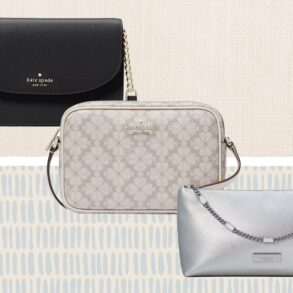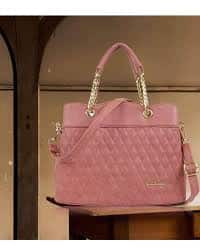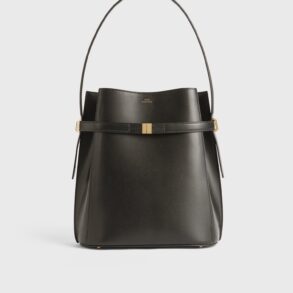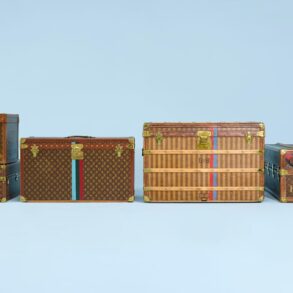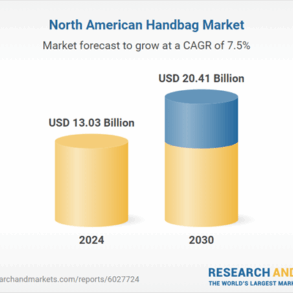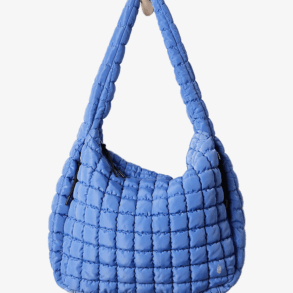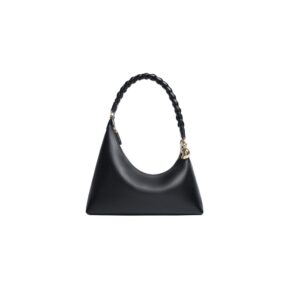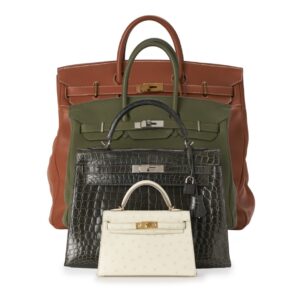May 6, 2025
IndexBox has just published a new report: Asia – Luggage And Handbags – Market Analysis, Forecast, Size, Trends and Insights.
The luggage and handbag market in Asia is poised for significant growth in the coming years, driven by increasing consumer demands. Projections indicate a steady rise in both market volume and value, with a predicted CAGR of +0.1% and +1.8% from 2024 to 2035. By the end of 2035, the market is expected to reach 2.9B units and $28.4B in value.
Market Forecast
Driven by increasing demand for luggage and handbags in Asia, the market is expected to continue an upward consumption trend over the next decade. Market performance is forecast to retain its current trend pattern, expanding with an anticipated CAGR of +0.1% for the period from 2024 to 2035, which is projected to bring the market volume to 2.9B units by the end of 2035.
In value terms, the market is forecast to increase with an anticipated CAGR of +1.8% for the period from 2024 to 2035, which is projected to bring the market value to $28.4B (in nominal wholesale prices) by the end of 2035.

Consumption
Asia’s Consumption of Luggage And Handbags
After two years of growth, consumption of luggage and handbags decreased by -0.6% to 2.8B units in 2024. In general, consumption, however, showed a relatively flat trend pattern. As a result, consumption attained the peak volume of 8.6B units. From 2021 to 2024, the growth of the consumption remained at a somewhat lower figure.
The size of the luggage market in Asia contracted to $23.3B in 2024, shrinking by -9.4% against the previous year. This figure reflects the total revenues of producers and importers (excluding logistics costs, retail marketing costs, and retailers’ margins, which will be included in the final consumer price). Overall, consumption, however, saw a moderate increase. As a result, consumption reached the peak level of $71.7B. From 2021 to 2024, the growth of the market failed to regain momentum.
Consumption By Country
China (1B units) constituted the country with the largest volume of luggage consumption, accounting for 37% of total volume. Moreover, luggage consumption in China exceeded the figures recorded by the second-largest consumer, India (377M units), threefold. Indonesia (165M units) ranked third in terms of total consumption with a 5.8% share.
From 2013 to 2024, the average annual rate of growth in terms of volume in China was relatively modest. In the other countries, the average annual rates were as follows: India (+1.5% per year) and Indonesia (+0.9% per year).
In value terms, China ($8.6B) led the market, alone. The second position in the ranking was held by India ($3.1B). It was followed by Indonesia.
From 2013 to 2024, the average annual rate of growth in terms of value in China amounted to +2.6%. The remaining consuming countries recorded the following average annual rates of market growth: India (+3.5% per year) and Indonesia (+2.9% per year).
In 2024, the highest levels of luggage per capita consumption was registered in the United Arab Emirates (6.9 units per person), followed by South Korea (2.1 units per person), Thailand (1.1 units per person) and Turkey (0.9 units per person), while the world average per capita consumption of luggage was estimated at 0.6 units per person.
In the United Arab Emirates, luggage per capita consumption plunged by an average annual rate of -2.9% over the period from 2013-2024. The remaining consuming countries recorded the following average annual rates of per capita consumption growth: South Korea (+1.7% per year) and Thailand (+0.8% per year).
Production
Asia’s Production of Luggage And Handbags
For the fourth year in a row, Asia recorded growth in production of luggage and handbags, which increased by 7.8% to 8.3B units in 2024. The total production indicated modest growth from 2013 to 2024: its volume increased at an average annual rate of +1.2% over the last eleven-year period. The trend pattern, however, indicated some noticeable fluctuations being recorded throughout the analyzed period. Based on 2024 figures, production increased by +36.8% against 2020 indices. The most prominent rate of growth was recorded in 2016 when the production volume increased by 66% against the previous year. As a result, production attained the peak volume of 11B units. From 2017 to 2024, production growth remained at a somewhat lower figure.
In value terms, luggage production contracted to $50B in 2024 estimated in export price. The total output value increased at an average annual rate of +2.1% over the period from 2013 to 2024; however, the trend pattern indicated some noticeable fluctuations being recorded in certain years. The pace of growth appeared the most rapid in 2022 with an increase of 20% against the previous year. The level of production peaked at $50.4B in 2023, and then fell in the following year.
Production By Country
China (6.5B units) constituted the country with the largest volume of luggage production, accounting for 78% of total volume. Moreover, luggage production in China exceeded the figures recorded by the second-largest producer, India (551M units), more than tenfold. The third position in this ranking was taken by Saudi Arabia (215M units), with a 2.6% share.
In China, luggage production remained relatively stable over the period from 2013-2024. In the other countries, the average annual rates were as follows: India (+2.3% per year) and Saudi Arabia (+44.9% per year).
Imports
Asia’s Imports of Luggage And Handbags
For the third year in a row, Asia recorded growth in purchases abroad of luggage and handbags, which increased by 1% to 1.2B units in 2024. Over the period under review, imports continue to indicate a moderate increase. The most prominent rate of growth was recorded in 2020 when imports increased by 586%. As a result, imports reached the peak of 6.7B units. From 2021 to 2024, the growth of imports remained at a lower figure.
In value terms, luggage imports dropped to $18.5B in 2024. Total imports indicated moderate growth from 2013 to 2024: its value increased at an average annual rate of +4.5% over the last eleven years. The trend pattern, however, indicated some noticeable fluctuations being recorded throughout the analyzed period. The most prominent rate of growth was recorded in 2021 with an increase of 34%. Over the period under review, imports reached the maximum at $21.3B in 2023, and then reduced in the following year.
Imports By Country
India was the key importing country with an import of around 351M units, which amounted to 29% of total imports. Thailand (108M units) took a 9.1% share (based on physical terms) of total imports, which put it in second place, followed by South Korea (8.1%), the Philippines (6.4%) and the United Arab Emirates (6.1%). Myanmar (46M units), Turkey (37M units), Indonesia (35M units), Hong Kong SAR (32M units) and Singapore (31M units) held a little share of total imports.
India was also the fastest-growing in terms of the luggage and handbags imports, with a CAGR of +21.2% from 2013 to 2024. At the same time, Myanmar (+20.4%), Indonesia (+9.0%), the Philippines (+6.5%), Turkey (+2.4%) and Thailand (+1.9%) displayed positive paces of growth. South Korea and Singapore experienced a relatively flat trend pattern. By contrast, the United Arab Emirates (-2.1%) and Hong Kong SAR (-14.9%) illustrated a downward trend over the same period. From 2013 to 2024, the share of India, Myanmar and the Philippines increased by +25, +3.2 and +2.1 percentage points, respectively. The shares of the other countries remained relatively stable throughout the analyzed period.
In value terms, the largest luggage importing markets in Asia were Hong Kong SAR ($2.4B), South Korea ($1.5B) and the United Arab Emirates ($1B), together accounting for 27% of total imports. Singapore, Thailand, Turkey, India, Indonesia, the Philippines and Myanmar lagged somewhat behind, together comprising a further 16%.
The Philippines, with a CAGR of +12.0%, recorded the highest growth rate of the value of imports, in terms of the main importing countries over the period under review, while purchases for the other leaders experienced more modest paces of growth.
Imports By Type
Handbags with outer surface of plastic sheeting or of textile materials represented the main type of luggage and handbags in Asia, with the volume of imports finishing at 490M units, which was approx. 41% of total imports in 2024. It was distantly followed by handbags with outer surface of vulcanised fibre or of paperboard (219M units), cases and containers; trunks, suit-cases, vanity-cases, executive-cases, brief-cases, school satchels and similar containers, with outer surface of plastics or of textile materials (207M units), travel sets; for personal toilet, sewing, shoe or clothes cleaning (161M units) and handbags with outer surface of leather, composition leather, or patent leather (59M units), together committing a 54% share of total imports. Cases and containers; trunks, suit-cases, vanity-cases, executive-cases, brief-cases, school satchels and similar containers, with outer surface of vulcanised fibre or of paperboard (38M units) and cases and containers; trunks, suit-cases, vanity-cases, executive-cases, brief-cases, school satchels and similar containers, with outer surface of leather, of composition leather or of patent leather (22M units) held a minor share of total imports.
From 2013 to 2024, average annual rates of growth with regard to handbags with outer surface of plastic sheeting or of textile materials imports of stood at +1.3%. At the same time, handbags with outer surface of vulcanised fibre or of paperboard (+10.6%), cases and containers; trunks, suit-cases, vanity-cases, executive-cases, brief-cases, school satchels and similar containers, with outer surface of vulcanised fibre or of paperboard (+8.2%), travel sets; for personal toilet, sewing, shoe or clothes cleaning (+4.7%) and cases and containers; trunks, suit-cases, vanity-cases, executive-cases, brief-cases, school satchels and similar containers, with outer surface of leather, of composition leather or of patent leather (+1.7%) displayed positive paces of growth. Moreover, handbags with outer surface of vulcanised fibre or of paperboard emerged as the fastest-growing type imported in Asia, with a CAGR of +10.6% from 2013-2024. Cases and containers; trunks, suit-cases, vanity-cases, executive-cases, brief-cases, school satchels and similar containers, with outer surface of plastics or of textile materials experienced a relatively flat trend pattern. By contrast, handbags with outer surface of leather, composition leather, or patent leather (-1.3%) illustrated a downward trend over the same period. From 2013 to 2024, the share of handbags with outer surface of vulcanised fibre or of paperboard and travel sets; for personal toilet, sewing, shoe or clothes cleaning increased by +10 and +2.5 percentage points, respectively. The shares of the other products remained relatively stable throughout the analyzed period.
In value terms, the largest types of imported luggage and handbags were handbags with outer surface of leather, composition leather, or patent leather ($8.7B), handbags with outer surface of plastic sheeting or of textile materials ($6B) and cases and containers; trunks, suit-cases, vanity-cases, executive-cases, brief-cases, school satchels and similar containers, with outer surface of plastics or of textile materials ($2.7B), together accounting for 93% of total imports. Handbags with outer surface of vulcanised fibre or of paperboard, cases and containers; trunks, suit-cases, vanity-cases, executive-cases, brief-cases, school satchels and similar containers, with outer surface of leather, of composition leather or of patent leather, cases and containers; trunks, suit-cases, vanity-cases, executive-cases, brief-cases, school satchels and similar containers, with outer surface of vulcanised fibre or of paperboard and travel sets; for personal toilet, sewing, shoe or clothes cleaning lagged somewhat behind, together comprising a further 6.8%.
Among the main imported products, cases and containers; trunks, suit-cases, vanity-cases, executive-cases, brief-cases, school satchels and similar containers, with outer surface of vulcanised fibre or of paperboard, with a CAGR of +7.0%, saw the highest growth rate of the value of imports, over the period under review, while purchases for the other products experienced more modest paces of growth.
Import Prices By Type
In 2024, the import price in Asia amounted to $16 per unit, with a decrease of -13.9% against the previous year. In general, the import price, however, continues to indicate slight growth. The pace of growth appeared the most rapid in 2021 when the import price increased by 785%. The level of import peaked at $18 per unit in 2022; however, from 2023 to 2024, import prices stood at a somewhat lower figure.
There were significant differences in the average prices amongst the major imported products. In 2024, the product with the highest price was handbags with outer surface of leather, composition leather, or patent leather ($147 per unit), while the price for travel sets; for personal toilet, sewing, shoe or clothes cleaning ($912 per thousand units) was amongst the lowest.
From 2013 to 2024, the most notable rate of growth in terms of prices was attained by handbags with outer surface of leather, composition leather, or patent leather (+5.7%), while the other products experienced more modest paces of growth.
Import Prices By Country
The import price in Asia stood at $16 per unit in 2024, declining by -13.9% against the previous year. In general, the import price, however, saw a mild expansion. The growth pace was the most rapid in 2021 an increase of 785% against the previous year. The level of import peaked at $18 per unit in 2022; however, from 2023 to 2024, import prices failed to regain momentum.
There were significant differences in the average prices amongst the major importing countries. In 2024, amid the top importers, the country with the highest price was Hong Kong SAR ($76 per unit), while Myanmar ($34 per thousand units) was amongst the lowest.
From 2013 to 2024, the most notable rate of growth in terms of prices was attained by Hong Kong SAR (+14.3%), while the other leaders experienced more modest paces of growth.
Exports
Asia’s Exports of Luggage And Handbags
Luggage exports expanded rapidly to 6.6B units in 2024, surging by 10% on the previous year. Total exports indicated a mild expansion from 2013 to 2024: its volume increased at an average annual rate of +1.7% over the last eleven years. The trend pattern, however, indicated some noticeable fluctuations being recorded throughout the analyzed period. Based on 2024 figures, exports increased by +61.7% against 2020 indices. The pace of growth was the most pronounced in 2016 when exports increased by 85%. As a result, the exports attained the peak of 9.2B units. From 2017 to 2024, the growth of the exports remained at a lower figure.
In value terms, luggage exports shrank to $30.1B in 2024. The total export value increased at an average annual rate of +1.3% over the period from 2013 to 2024; however, the trend pattern indicated some noticeable fluctuations being recorded in certain years. The growth pace was the most rapid in 2022 with an increase of 30%. Over the period under review, the exports hit record highs at $31.4B in 2023, and then fell slightly in the following year.
Exports By Country
China dominates exports structure, accounting for 5.4B units, which was approx. 82% of total exports in 2024. It was distantly followed by India (524M units), making up a 7.9% share of total exports. Saudi Arabia (196M units) and Vietnam (110M units) held a relatively small share of total exports.
China experienced a relatively flat trend pattern with regard to volume of exports of luggage and handbags. At the same time, Saudi Arabia (+76.7%), India (+12.0%) and Vietnam (+10.7%) displayed positive paces of growth. Moreover, Saudi Arabia emerged as the fastest-growing exporter exported in Asia, with a CAGR of +76.7% from 2013-2024. India (+5.2 p.p.) and Saudi Arabia (+3 p.p.) significantly strengthened its position in terms of the total exports, while China saw its share reduced by -9.1% from 2013 to 2024, respectively. The shares of the other countries remained relatively stable throughout the analyzed period.
In value terms, China ($21.4B) remains the largest luggage supplier in Asia, comprising 71% of total exports. The second position in the ranking was held by Vietnam ($1.5B), with a 4.8% share of total exports. It was followed by India, with a 3.5% share.
From 2013 to 2024, the average annual rate of growth in terms of value in China was relatively modest. In the other countries, the average annual rates were as follows: Vietnam (+4.8% per year) and India (+4.1% per year).
Exports By Type
Handbags with outer surface of plastic sheeting or of textile materials (3B units) and cases and containers; trunks, suit-cases, vanity-cases, executive-cases, brief-cases, school satchels and similar containers, with outer surface of plastics or of textile materials (2.8B units) prevails in exports structure, together achieving 87% of total exports. It was distantly followed by travel sets; for personal toilet, sewing, shoe or clothes cleaning (633M units), generating a 9.6% share of total exports.
From 2013 to 2024, the most notable rate of growth in terms of shipments, amongst the key exported products, was attained by handbags with outer surface of vulcanised fibre or of paperboard (with a CAGR of +3.6%), while the other products experienced more modest paces of growth.
In value terms, the largest types of exported luggage and handbags were cases and containers; trunks, suit-cases, vanity-cases, executive-cases, brief-cases, school satchels and similar containers, with outer surface of plastics or of textile materials ($14.2B), handbags with outer surface of plastic sheeting or of textile materials ($10.5B) and handbags with outer surface of leather, composition leather, or patent leather ($3.8B), together comprising 95% of total exports. Cases and containers; trunks, suit-cases, vanity-cases, executive-cases, brief-cases, school satchels and similar containers, with outer surface of leather, of composition leather or of patent leather, handbags with outer surface of vulcanised fibre or of paperboard, travel sets; for personal toilet, sewing, shoe or clothes cleaning and cases and containers; trunks, suit-cases, vanity-cases, executive-cases, brief-cases, school satchels and similar containers, with outer surface of vulcanised fibre or of paperboard lagged somewhat behind, together accounting for a further 5.2%.
Cases and containers; trunks, suit-cases, vanity-cases, executive-cases, brief-cases, school satchels and similar containers, with outer surface of vulcanised fibre or of paperboard, with a CAGR of +10.1%, saw the highest growth rate of the value of exports, among the main exported products over the period under review, while shipments for the other products experienced more modest paces of growth.
Export Prices By Type
The export price in Asia stood at $4.5 per unit in 2024, reducing by -13.2% against the previous year. In general, the export price saw a relatively flat trend pattern. The most prominent rate of growth was recorded in 2017 an increase of 96%. Over the period under review, the export prices reached the maximum at $6.8 per unit in 2014; however, from 2015 to 2024, the export prices stood at a somewhat lower figure.
Prices varied noticeably by the product type; the product with the highest price was handbags with outer surface of leather, composition leather, or patent leather ($40 per unit), while the average price for exports of travel sets; for personal toilet, sewing, shoe or clothes cleaning ($390 per thousand units) was amongst the lowest.
From 2013 to 2024, the most notable rate of growth in terms of prices was attained by cases and containers; trunks, suit-cases, vanity-cases, executive-cases, brief-cases, school satchels and similar containers, with outer surface of vulcanised fibre or of paperboard (+6.8%), while the other products experienced more modest paces of growth.
Export Prices By Country
The export price in Asia stood at $4.5 per unit in 2024, reducing by -13.2% against the previous year. Over the period under review, the export price showed a relatively flat trend pattern. The most prominent rate of growth was recorded in 2017 when the export price increased by 96%. Over the period under review, the export prices attained the peak figure at $6.8 per unit in 2014; however, from 2015 to 2024, the export prices stood at a somewhat lower figure.
Prices varied noticeably by country of origin: amid the top suppliers, the country with the highest price was Vietnam ($13 per unit), while Saudi Arabia ($98 per thousand units) was amongst the lowest.
From 2013 to 2024, the most notable rate of growth in terms of prices was attained by China (-0.1%), while the other leaders experienced a decline in the export price figures.
Source: IndexBox Market Intelligence Platform
This post was originally published on this site be sure to check out more of their content.






